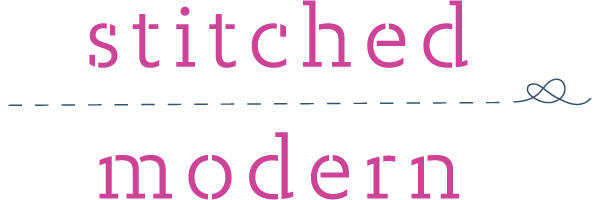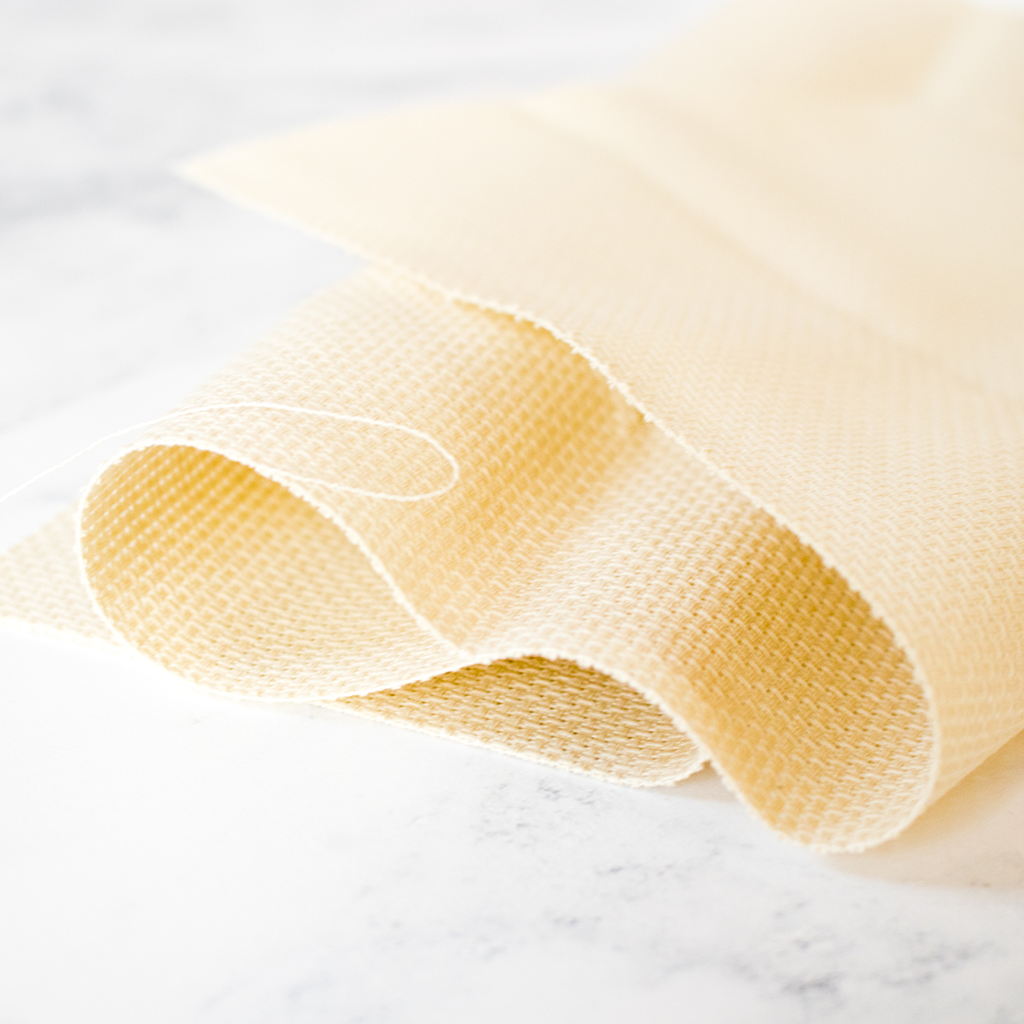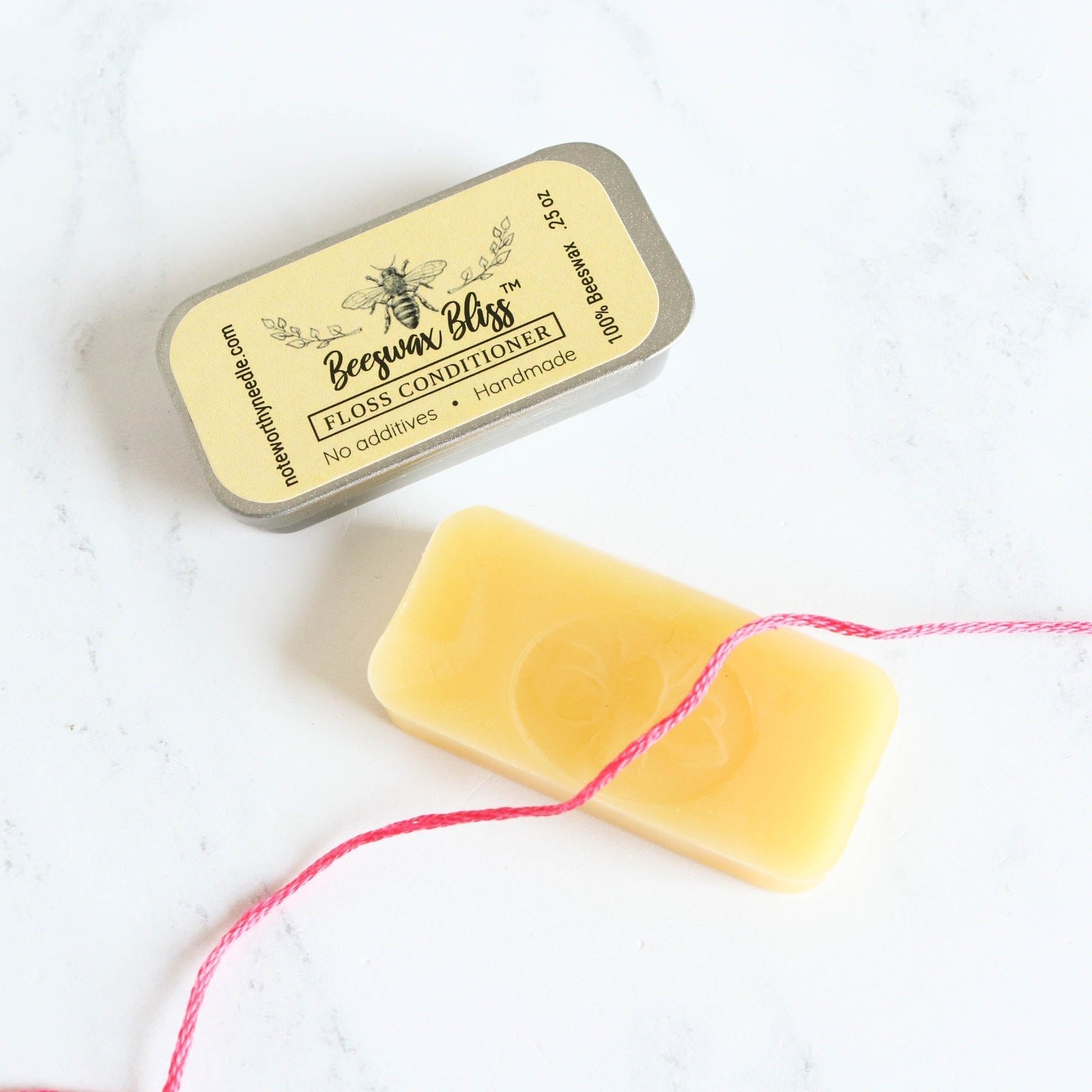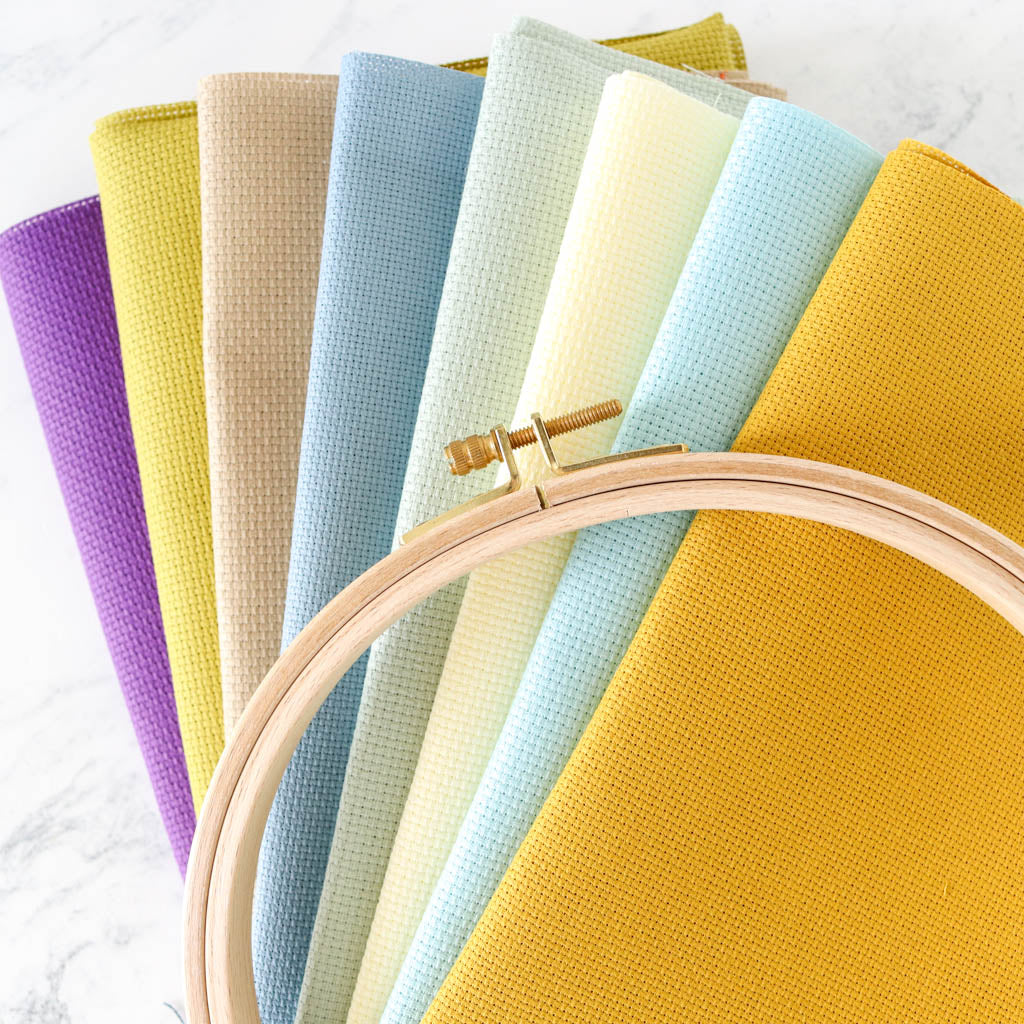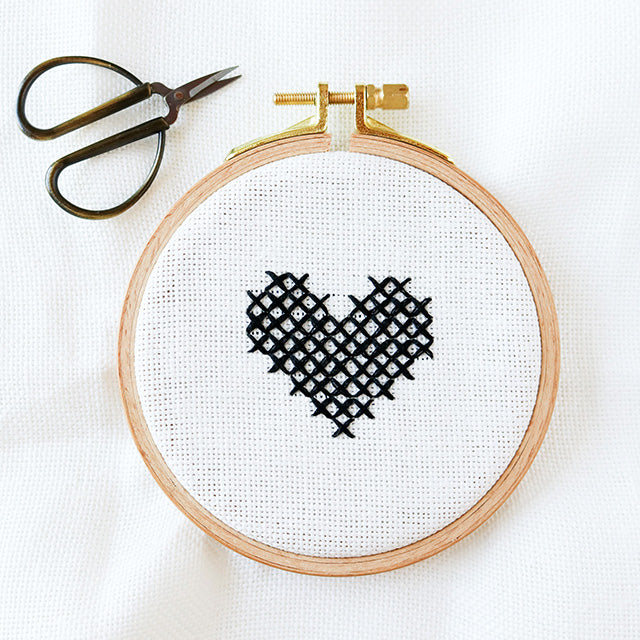
Embroidery hoops are familiar to anyone who does cross stitch or hand embroidery, but there is a lot to know about these ubiquitous tools. In this post you will learn all about embroidery hoops, including the different kinds of hoops, how to pick the right one, and how (and when) to use them.
Keep reading to learn everything you need to know about embroidery hoops. Looking to add some hoops to your toolkit? See our full selection in the Stitched Modern shop.

Do I need to use an embroidery hoop?
The decision to use an embroidery hoop (or not) depends on a number of factors, including the type of stitching you are doing, the fabric you are using, and your level of experience.
When you are doing hand embroidery, having your fabric held taut in an embroidery hoop can be particularly beneficial. Tension helps you make neater stitches. It can also prevent puckering in the spaces between stitches.
Some forms of hand embroidery, like sashiko, does not require a hoop.

For cross stitch, using a hoop is not as essential, although like with hand embroidery, it can help you make more even stitches. If you are new to cross stitch, using a hoop can help you handle the fabric, see the holes more clearly, and keep your stitch tension more consistent.
Fabric choice also makes a difference. I tend to use a hoop more when cross stitching on linen than when working with Aida because having the fabric taut helps me better see linen's finer weave. A hoop can also be particularly useful when cross stitching on dark fabric or when using specialty threads.
When it comes down to it, the choice to use an embroidery hoop or not is up to you. Some stitchers always use hoops, others rarely do. It depends on what feels comfortable to you.
Types of embroidery hoops
There are several different kinds of embroidery hoops. They all hold fabric essentially the same way - that is, sandwiched between an inner ring and an outer ring. The main difference between the types is how tension is created on the fabric.
Screw tension
This is the most common kind of embroidery hoop. A screw on the outer ring lets you increase and decrease tension on the hoop. Screw tension hoops come in a range of materials, sizes, and shapes and are widely available.

Spring tension
With these hoops, tension is created by a metal inner ring that slots into a grove in the plastic outer ring. Often used for machine embroidery, spring tension hoops can also be used for hand embroidery and cross stitch. They keep fabric nice and tight, but the handles are bulky and can get in the way.

Flexi hoops
Flexi hoops have the look of real wood, but they are made from a flexible vinyl that fits tightly over an inner plastic ring. They hold the fabric super tight, but they can be hard to use. I like them best for framing a finished piece rather than using them while stitching.

Q-Snaps
These aren't technically hoops, but Q-snaps are a very popular option for cross stitchers. They're lightweight, comfortable to hold, and come in lots of sizes.

Plastic vs. wood
Plastic is inexpensive and can be a good choice for beginners. Some plastic hoops have moulded edges that help keep fabric extra tight. Be sure to seek out high quality plastic hoops. If the material is not sufficiently sturdy, plastic hoops can warp and bend.

Like plastic hoops, wood hoops come in a variety of sizes. They also come in a range of widths, from narrow to thick, so you can choose what feels right in your hand. The different widths also accommodate different weights of fabric: thinner hoops for thinner fabric, and thicker hoops for thicker fabric.
When purchasing a wood hoop, look for one with smooth, round edges that don't splinter and snag. Also look for quality brass fittings. Our favorites are these beechwood hoops made by Hardwicke Manor. They're smooth, solid, and lovely to hold.

Beware of the inexpensive wood hoops you find at most big box craft stores. They typically have rough edges that splinter. They also gap and warp, and don't hold the fabric well. Save yourself the aggravation and avoid these.
Hoop shape
Embroidery hoops are most commonly round, but you can also find oval and square shapes. Round hoops are available in a large range of sizes, while oval and square sizes are more limited. You don't necessarily need a square hoop when you are stitching a square design, but it can help if you want to fit the entire design within the hoop.

How big should my hoop be?
Hoops are available in a range of sizes from as small as 3 inches in diameter to as large as 12 inches or more. (Hoops designed for quilting can be even larger.) Smaller hoops are generally easier to hold while you stitch than larger ones. I tend to most often reach for hoops that are between 5 and 8 inches.
Ideally, choose a hoop that is about 1-inch larger than the design you are stitching. Holding a hoop that is larger than 8 inches can be unwieldy, so for larger pieces, it's okay to recenter the fabric in the hoop as needed, just be sure to always take the fabric out of the hoop when you are not stitching.
Another option for larger pieces is to use a Q-snap frame.
How to use an embroidery hoop
Whatever style of hoop you choose, the process of putting your fabric in it is essentially the same. For this example we will use a screw tension hoop.
1. First loosen the screw and separate the inner and outer hoops. Place the inner ring (the one without the screw) flat on your work surface. Drape your fabric over the inner ring with the right side up.

2. Slide the outer ring over the fabric and inner ring. You may need to loosen the screw even further to get it to fit over. Don't be tempted to pick up the inner hoop as you put the outer hoop on. Keeping it on a flat surface will help you line up the inner and outer hoop so they're even. You can press the outer hoop down with your hands and not worry about it sliding off the other side.

3. Tighten the screw part way. Make it tight enough that the outer hoop will not slip off when you pick it up, but not fully tight.

4. Carefully pull the edges of your fabric to tighten it. Work your way around the hoop pulling evenly on all sides. Be firm about this, but don't pull so hard that you warp the fabric. This will help even out the fabric and remove any bumps and folds.

5. Once your fabric is taut, tighten the screw the rest of the way.

Tips for getting good tension
When you're using an embroidery hoop, the saying goes your fabric should be as "tight as a drum." Meaning, when you tap on it, it should be firm without any give.
The first step to getting good tension is to pull evenly and firmly all around your fabric to get it tight in the hoop. I like working around the hoop in a circle. Another option is to pull on one side and then the opposite side (the left and then the right, for example). Your goal is to even the fabric out and get it tight, but not to warp or distort it.
Once your fabric is taut. you need to tighten the hoop screw to makes sure the fabric doesn't slip. Finger tightening is usually enough, but if you find your hoop is hard to tighten, a small screwdriver can help. You can also use foam grips that fit over the head of the screw to help tighten it.

Another step to take to keep your fabric nice and tight, especially when using a wood hoop, is to wrap the inner hoop with cotton twill tape. Called binding your hoop, this creates extra friction to hold the fabric. It also has the advantage of minimizing creases in your fabric and crushed stitches, particularly when working with delicate fabric or when using specialty thread like silks.

Can I keep my fabric in the hoop when I'm not stitching?
The danger with leaving fabric in a hoop when you're not stitching is that it can create creases that are hard to get out. If the hoop is large enough to encompass the entire design, you can get away with leaving the fabric in the hoop, but it's a good idea to loosen the tension a bit when you're done stitching.
If your hoop is smaller than your design, you definitely want to take the fabric out when you're done stitching for the day.
What if I have a lot of extra fabric?
If you're working on a project that is much bigger than your hoop, you will have excess fabric that hangs down around the hoop. This fabric can get in the way as you move between the front and back of your hoop as you stitch. One solution is to use these clever silicone hoop huggers to bundle up the extra fabric. They are flexible and fit most hoops.

Ready to find your perfect embroidery hoop? Check out the full selection of hoops, frames, and accessories in the Stitched Modern shop.
